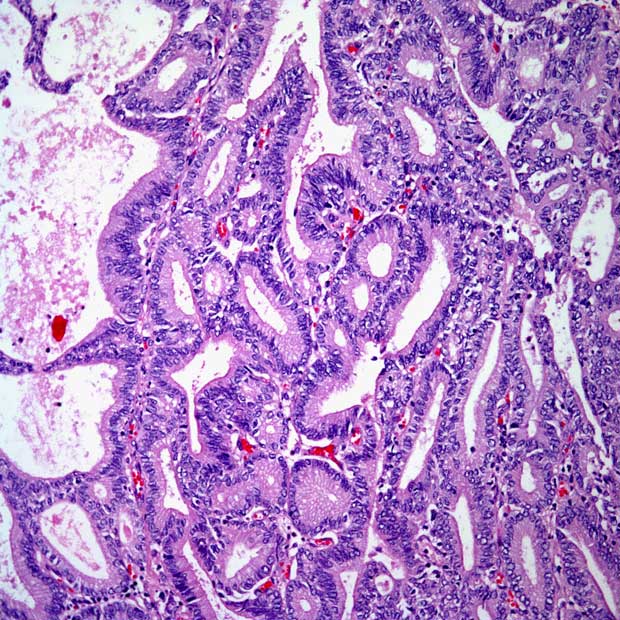CRT Plus Chemo Did Not Improve RFS in Resected Gallbladder Cancer
Results from the ACCELERATE trial did not improve relapse-free survival when chemoradiation was added to chemotherapy for patients with resected gallbladder cancer.
Results from the ACCELERATE trial did not improve relapse-free survival when chemoradiation was added to chemotherapy for patients with resected gallbladder cancer.

Relapse-free survival (RFS) was not improved with the addition of chemoradiation (CRT) to chemotherapy vs chemotherapy alone in patients with resected gallbladder cancer, according to results from the phase 3 ACCELERATE trial (CTRI/2018/04/013218) presented at the 2025 ASCO Gastrointestinal Symposium.
The median survival was 52.7 months. Kaplan Meier estimates for RFS (n = 93) showed an HR of 1.59 (95% CI, 0.83-3.03) and an adjusted HR (aHR) of 1.09 (95% CI, 0.54-2.17). In the chemotherapy-alone arm, 16 patients had progression vs 22 in the combination arm. The Kaplan Meier estimate for RFS by CA 19.9 status (n = 79) included an HR of 6.49 (95% CI, 2.87-14.7) and an aHR of 5.4 (95% CI, 2.3-12.6).
Regarding Kaplan Meier estimates for overall survival (OS; n = 93), the HR was 1.60 (95% CI, 0.86-2.95) and the aHR was 1.16 (95% CI, 0.61-2.22). The estimates for OS by CA 19.9 status (n = 79) had an HR of 6.12 (95% CI, 2.82-13.28) and an aHR of 5.27 (95% CI, 2.34-11.9).
“This is the first prospective trial to address the issue of adjuvant CRT in gallbladder cancer,” Atul Sharma, MD, DM, from All India Institute of Medical Sciences, New Delhi, India, stated during the presentation. “Since accrual could not be completed a larger trial is needed to address this important issue.”
A total of 94 patients were randomly assigned to either the chemotherapy alone arm (n = 49) or the chemotherapy plus CRT arm (n = 45). In the chemotherapy alone arm, patients were given either 6 cycles of gemcitabine at 900 mg/m2 and oxaliplatin at 80 mg/m2 intravenously on days 1 and 8 every 3 weeks; or gemcitabine at 1000 mg/m2 and cisplatin at 25 mg/m2 on days 1 and 8 every 3 weeks. The combination arm was given 3 cycles of chemotherapy plus CRT at 45 Gy in 25 fractions over 5 weeks with concurrent capecitabine at 825 mg/m2 twice a day during radiation days, and then another 2 to 3 cycles of chemotherapy. Patients who had a positive margin were given an additional 9 Gy boost.
The primary end point was RFS, and the secondary end points were OS and toxicity of chemotherapy and CRT.
Patients were included if they had radical cholecystectomy by a surgeon who was trained in gastrointestinal surgery, pT2 or higher or N+ disease, or at least 6 lymph nodes that should have been dissected and microscopically examined. Patients were excluded if they were women of reproductive age not practicing contraception, those who were on other investigational drugs, or had a history of carcinoma within the previous 5 years.
The sample size calculation found a median RFS with chemotherapy alone of 18 months. The hypothesis was that CRT would increase the median RFS from 18 to 28 months.
At the time of enrollment, 16 males and 32 females were in the chemotherapy alone arm vs 13 and 32 in the CRT plus chemotherapy arm. Pain was noted in 40 patients vs 41 patients, respectively, an ECOG performance status of 1 was observed in in 37 and 36 patients, and a median age of 55 was observed in both arms.
Baseline parameters at enrollment also included diabetes in 8 patients vs 8 patients, hypertension in 9 vs 7, and more than 1 comorbidity in 6 vs 2 between the monotherapy and combination arms, respectively.
In the chemotherapy-alone arm, the most common disease stage was IIA (n = 20) vs IIIA in the combination arm (n = 19). Additionally, 12 patients vs 16 patients were node positive.
In the chemotherapy arm, the most common number of chemotherapy cycles was 6 (n = 35). The majority did not have dose reductions (n = 30), and there were dose delays of up to 1 week (n = 22). In the combination arm, the most common number of chemotherapy cycles was 6 (n = 19). The majority of dose reductions were up to 25% (n = 24), and dose delays occurred up to 1 week (n = 25).
All grade adverse effects (AEs) for diarrhea occurred in 27 patients in the chemotherapy arm and 14 patients in the CRT plus chemotherapy arm, with grade 3/4 AEs occurring in 2 vs 1. For hepatic, 25 patients vs 18 patients experienced all grade and 1 vs 3 had grade 3/4. Regarding peripheral neuropathy, 31 vs 12 patients experienced all-grade AEs and none had grade 3/4.
Of note, 30 patients in the chemotherapy arm were alive compared with 21 in the CRT plus chemotherapy arm, with 18 and 24, respectively, having died in each arm. Causes of death included relation to disease (n = 13 vs n = 20), toxicity (n = 1 vs 1), or unknown causes (n = 1 vs n = 1).
“It is unclear whether the lack of improvement in the experimental arm was influenced by unexpectedly favorable outcomes in the standard arm Additionally, it remains uncertain if the results would have differed if the study completed planned enrollment,” Sharma concluded.
References
Sharma A, Pathy S, Kumar S. Adjuvant chemotherapy or chemo-radiation in gallbladder cancer: A phase III randomized controlled study (ACCELERATE trial). J Clin Oncol. 2025;43(4):519. doi:10.1200/JCO.2025.43.4_suppl.519
Newsletter
Stay up to date on recent advances in the multidisciplinary approach to cancer.